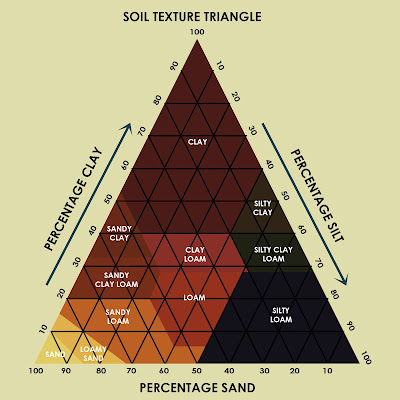Wednesday, 13 May 2015
Tips to Improve the Quality of Your Soil
One of the essential resources on Earth is Soil; it has many important functions to humans, plants and animals. Of course the food we consume wouldn't be available without the soil that provides the nourishment that plants need to grow. Serves as a habitat for a lot of creatures present on the ecosystem including us humans. Soil is truly a marvellous product of nature and without which there would be no life. I will make you appreciate soil much more by sharing some important information about it and how you can maintain a healthy soil.
What is Soil?
By googling this topic I stumble on different definitions of soil but I think this is a good one. Soil is "a dynamic natural body on the surface of the earth in which plants grow, composed of mineral and organic materials and living forms"
Now we should enumerate the different types of soil. Knowing this is crucial for gardeners so they can determine what kind of plant species they can grow on a specific type of soil. There are three main types of soil—clay, sandy, and loamy. Loams are a mixture of clay, sand, and silt, and are more fertile than other soils.
I have learned a quick test to determine the type of soil that you have: What you have to do is rub some soil in your hands, if it's sandy, you'll feel the sand particles. If it's heavy clay, it will feel very slippery when wet. Heavy clay soil is slower to drain and takes longer to warm up and dry off in the spring. Loamy soils will feel smooth textured and hold their shape for a short period of time.
We are now going to the important part of this discussion, the tips to improve the quality of your soil. You may take a look at the infographics above to learn more on maintaining a healthy soil.
1. Add compost to your soil
Beside from being eco-friendly composting is often considered as a soil conditioner; it improves the structure of the soil enabling it to retain more nutrients, moisture and air that can be useful for plants. Composting is turning waste materials into a beneficial matter. A blend of waste material such as vegetable matter, fruit waste, hay, straw, paper and manure are the components of a good compost. If you are asking how much compost you need to put on the soil, it depends on the type of soil you have. The best time of the year to use compost is during spring and fall.
2. Have your soil tested
This is a non-negotiable for gardeners, you should always have your soil checked. In soil testing we are doing an analysis of the soil to determine the nutrients (nitrogen, potassium and phosphorous levels are the 3 main nutrients needed), contamination content and other characteristic like pH level. There are extension offices in your local area that offers free or low-cost soil testing and there are a variety of commercial testing services as well. For ideal plant growth, soil needs the proper pH level. pH is measured on a scale of 1 to 14; with a pH less than 7 are said to be acidic and soil with a pH greater than 7 are basic or alkaline. If you'd like to measure the soil pH you can find inexpensive yet accurate pH meter at GXPRODUCTS.
3.Be careful with fertilizer
Why should we be careful about fertilizers? Don't get me wrong with this one, plants needs fertilizer for additional nutrients and to thrive but not all fertilizers are good for the plants. Too much of fertilizer can be bad for plants, also if it's not the right kind. If you are not sure what kind of fertilizer to put for a certain breed of plant you may contact the Local County Office for further assistance.
4. Don’t tread on soil
It is a no-no to step in to the soil where you are planning to place the plant or where the plants are currently placed. When you step in to the soil it can make it compact, a well-compacted soil can prevent moisture from getting in and out.What you must do is to create a pathway where you can walk in to avoid pressing the soil.
5.Cultivation and weed control
There are times that soil can get compacted and these scenario is no good for the plants because it will be harder for them to grow and access nutrients. That being said cultivation could help to improve the condition of the soil. Aside from cultivation you also need to control weeds that compete with productive crops for space, nutrients, water and light. Some do weed control with the use of chemicals but I don't suggest this method for it can be harmful not only for plants but also to animals and humans around. It will be a good idea to do the manual removal of weeds, it maybe tiring but you can be sure that you will remove the unnecessary plants only.
So there, those are the things you need to know to ensure that you can get the most out of your soil. I hope you will learn something from this post about soil and how to improve the quality of your soil.
References:
http://ag.arizona.edu/oals/soils/defined.html
Brady, N.C. (1974). The Nature and Properties of Soils. New York: MacMillan. 639 pp.
https://www.botanicalinterests.com/articles/view/9/The-Secret-is-in-the-Soil
Subscribe to:
Post Comments (Atom)



No comments:
Post a Comment